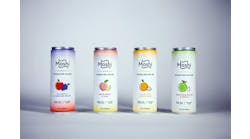By Jack Neff, Business EditorWal-Mart Supercenters and dollar stores are the fastest-growing retail markets for food products, but several other formats also are fast emerging as players in the market once dominated by supermarkets. Target, drug stores, club stores, foodservice supply stores, the new Sears Grand mass-merchandise format, even home-improvement stores are muscling in on grocers’ turf. Despite the growth in a host of other formats, supercenters remain the fastest-growing segment of U.S. food retailing, according to Columbus, Ohio-based Retail Forward. After them, the consulting firm expects dollar stores and other small-format value retailers to continue to grow nearly as fast, adding 8,000 stores. "Lacking both history and [in some cases] size to justify investing resources, how do CPG [consumer packaged goods] manufacturers identify and cultivate âground-floor’ channel opportunities that could be the next major retail force?" asks Jim Hertel of Willard Bishop Consulting, Barrington, Ill. Growth is emerging or continuing in a variety of formats that get less attention. For example, club stores, thought to have peaked after rapid expansion in the early 1990s, have been a potent growth channel in the past year.
Join the clubIndeed, while same-store sales have stagnated overall for Wal-Mart Stores in recent months, a reinvigorated Sam’s Club has been a surprise growth engine. Same-store sales for the U.S. Wal-Mart Stores division was a fairly anemic 2.2 percent in July, but Sam’s Club same-store sales rose 7 percent. Wal-Mart’s club rival, Costco, is doing even better. Overall sales through the first nine months of its fiscal year, which ends Aug. 9, were up 14 percent to $33 billion, with same-store sales contributing 11 percent growth. Beyond Costco, Sam’s and BJ’s Wholesale Club, some other club-like formats also are emerging, presenting new opportunities for food processors, says Sven Risom, senior consultant with Cannondale Associates in Wilton, Conn. He points to Cincinnati-based Gordon’s Foodservice, a foodservice supplier that’s opening retail stores at several locations around the country offering foodservice packs for walk-ins from both restaurants and the general public. Unlike clubs, the Gordon’s locations don’t charge membership fees. But like clubs, they offer smaller players and foodservice suppliers the opportunity to expand their customer bases shoulder-to-shoulder with big national retail brands, Risom says. In the case of H.J. Heinz Co., a player in canned soup in Europe and U.S. foodservice but not in U.S. retail, consumers can try a competitor to Campbell at foodservice outlets. The growing variety of outlets that are at least open to tinkering with food offerings leaves manufacturers needing to make choices about where it makes sense to play. One major food company recently considered entering Bed Bath and Beyond stores with some products before running the numbers and determining it couldn’t be done profitably, said Jon Kramer, president of J. Brown Agency, Stamford, Conn. J. Brown develops co-marketing promotions with retailers and is jointly owned by the ad agency Grey Global Group and grocery products broker Crossmark.
| DOLLAR SHARE OF GROCERIES & CONSUMABLES | | |
| | 2003 | 2008 |
| Traditional grocery | 56.3% | 48.3% |
| Convenience stores | 12.4% | 12.0% |
| Non-traditional grocery | 31.3% | 39.7% |
| | | |
| Source: Willard Bishop Consulting | | |
"If you don’t have the established distribution or logistics resources to get in there, it becomes much more expensive," Kramer says. "The cost per unit sold sometimes just doesn’t make sense. Plus, these companies really have to keep their eye on the volume ball. They’ve got to be looking at driving the high volume with their biggest customers." That said, however, dollar stores’ growth clearly has captured the attention of branded food manufacturers. And drug stores have become aggressive about moving in on the turf of convenience stores and supermarkets by expanding their food offerings. "Drug is a very big growing opportunity that everyone is focusing in on because of the aging of America and the shopper profile," Kramer says. "When people are dropping in there, they might as well be buying something else. And if you lump all of these new distribution opportunities together, there’s a high degree of interest." Even home improvement retailers have begun to show interest in food and beverage brands to drive incremental sales via special displays near checkout stands. PepsiCo's Pepsi and Frito-Lay brands have done promotions with home improvement retailers, including Home Depot. For marketers of impulse products, including beverages and snacks, such seemingly out-of-the-way locations can pay off, says Paul Kelly, partner with Silvermine Consulting, Westport, Conn. But he says the marketer needs to have either a direct-store-delivery system or a relationship with a distributor who can service such out-of-the-way chains to make such deals pay off. "Thanks to convergence, almost every channel now has food offerings," Kelly says. "If you’re a food manufacturer, you want to look at your categories and see which are best suited for different channels. The nice thing about some of the odd channels is that you don’t have a lot of private-label competition, although [in drug] CVS is starting to come out with some private-label product." One-off deals with alternative formats, however, aren’t risk free. Procter & Gamble Co.’s Pringles brand tried a promotion with a home improvement retailer earlier this year that ended up offering the snack brand at prices lower than could be found at other major retailers, prompting complaints from bigger, regular customers, according to P&G executives. On the other hand, distribution in out-of-the way locales such as tattoo parlors and salons helped build the buzz that made Jones Soda a cult favorite, says Peter Van Stolk, president of the company. In such locales, the operators or proprietors can talk up the brand, helping build word of mouth. Mass merchandiser Target Stores, because of its emphasis on fashion and always having "the next big thing," can be a great outlet for smaller food brands with perceived cachet, says Ken Harris, partner with Cannondale Associates in Evanston, Ill. For Jones Soda, Target offered the brand its first shot at national chain distribution in 1999. This year, Jones again used Target as a launching pad as it developed a new line of canned Jones Soda products for initial exclusive distribution at Target’s 1,200 traditional discount and supercenter locations. "We have been searching for the appropriate time to introduce our premium soda into the much larger canned beverage market," Van Stolk says. "Given Target’s powerful footprint, national recognition and historical success with similar licensing arrangements, we believe this is a great opportunity."
Even grocers experimentEven supermarket retailers are fast getting into alternative format experimentation. Kroger Co., the nation’s largest supermarket retailer, is testing a 100,000-square-foot store that’s about twice the size of a supermarket but half the size of a supercenter, hoping for a new way to combat the encroachment of Wal-Mart supercenters on its territory. Kroger, Food Lion, and Roundy’s are among supermarket chains testing smaller-format stores featuring a heavy emphasis on fresh foods, quick checkouts and customer service. The Roundy’s concept, a 3,000-square-foot Pick-n-Save store, combines high-quality perishables with a small array of essential center-store food and non-food offerings. "They’re looking at it as the anti-Wal-Mart," Harris says. "Not everyone can shop at Wal-Mart every day, and low prices are important, but there have got to be other things." Regardless of which formats prevail, it’s important for food processors to stay abreast of all the experiments and, where practical, cooperate with retailers in making them work. One common thread in most of the emerging formats is more limited assortments, Harris says, and developing strong relationships with retailers is one way to make sure your brands get selected as keepers. The fact that so many formats are vying for consumers’ food dollars provides evidence that no single format is likely to truly dominate retailing in the future, Kelly says. "Consumers say they hate supercenters, but they still continue to go," he says. "Certainly some communities are going to keep them out. And there’s certainly still a place for small formats to grow," particularly in big markets like New York, where supercenters and other large-format stores will have difficulty, he says. Just as manufacturers are doing their analyses of which brands are best suited to which outlets, consumers, too, increasingly are segmenting their shopping choices along category lines, Kelly believes. "I think you probably will see consumers become more educated to buying certain categories in certain formats," Kelly says. Supercenters and clubs are becoming destinations for stockup items and non-food categories in particular, but not as much for fresh foods. What’s less clear is if there’s room for more players to get in on the supercenter concept, with Wal-Mart having already told analysts last year that it intends to place supercenters closer together than in the past and accept more cannibalization. Sears, however, is also treading on supercenter turf, adding more packaged food and consumable offerings to its new Sears Grand concept. The big-box store currently is at three locations, and Sears plans to open dozens more, especially in off-mall locales, in the coming year. Industry consultants, however, are dubious about the prospects for the Sears Grand and other combo store concepts. "You don’t have a clear positioning," Kramer says. "And without that, you’re just not in business anymore. That’s where the supermarket industry lost its way."
Sears’ Grand plan As early as last October, Sears Roebuck & Co. opened a 210,000-sq.-ft. store in West Jordan, Utah, as an experiment toward achieving a couple of goals:
Such stores would get them into the game of supercenters, where Wal-Mart, Target and others are beating Sears even in its strong suits of clothing, hardware and appliances.
Sears could experiment with food retailing, at least for the "as long as I’m here buying fertilizer I’ll pick up a gallon of milk" shopper.
The new formats would move Sears out of shopping malls, whose existence also looks in question.That store was followed this April by a mall-based store in Gurnee, Ill. (195,000 sq. ft.), and in July by a non-mall one in Las Vegas (165,000 sq. ft.). In June, Sears took the big gamble, committing an estimated $820 million to buy and renovate up to 54 former Kmart and seven Wal-Mart stores to jump headlong into this new strategy.
Most of the conversions will be slightly smaller than the initial three Sears Grand stores, and some will be an entirely new format, Sears officials say. But the mix apparently will be similar: combining the traditional Sears blend of apparel, Craftsman tools and Kenmore appliances with at least a limited selection of grocery, health & beauty and small electronics. The amount of floor space dedicated to groceries is not set.It’s questionable whether Sears can succeed in essentially the same format at locations that already have failed. "Time will tell whether Sears executed a genius move or a blunder," Carol Levenson of GimmeCredit was quoted in the
Chicago Tribune.Food on
TargetTarget declined to be interviewed for this story, but press reports have the country’s second largest retailer (behind Wal-Mart) "quietly" expanding a new store model that relies more extensively on groceries.Dubbed only P2004, according to Reuters news service, the stores have a wider selection of consumables, including paper supplies and health & beauty aids. Target has told financial analysts it plans to have 200 or more of the new format stores in operation by the end of this year.Separately, but perhaps connected to this initiative, Target also has been reported to be creating a private label food program. One report says Target’s Archer Farms store brand will be increased to 1,900 products by year's end.


